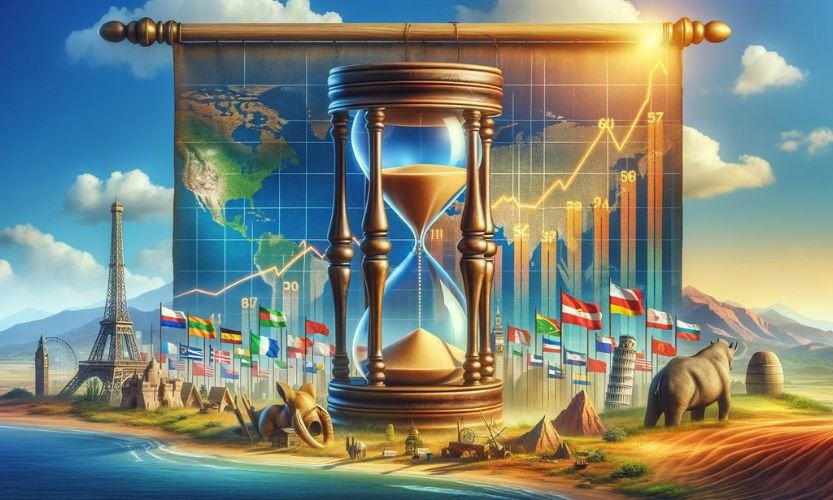When we listen to an economy’s echoes, we often hear about the lagging indicators. These signals follow major economic shifts like the sound trailing behind a bell’s toll. They include familiar metrics such as GDP reports, unemployment rates, and consumer price indexes. Let’s explore these indicators with real-life examples to understand their delayed yet insightful narrative.
GDP, a Key Lagging Indicator

GDP reports serve as a retrospective glance at a country’s economic progress. They provide the sum value of all produced goods and services within a specific timeframe, typically reported every three months. An upward trend in GDP is a sign of economic growth, whereas a downturn indicates a shrinking economy.
Lagging indicator example: Take, for example, a nation that recently hosted a significant global event like the Olympics. The post-event GDP report would likely reflect an economic surge driven by increased tourism and infrastructure investments. However, this data is retrospective, merely confirming the economic vibrancy that would have been evident amidst the event’s excitement.
Unemployment: The Lagging Indicator of Workforce
Unemployment rates are the shadow of the workforce, slow to shift and change direction. This indicator measures the percentage of the jobless labor force and actively seeking employment. It’s a lagging economic indicator because companies typically wait to hire or fire until they are sure the economy is recovering or declining.
Imagine a factory that has been seeing a decrease in orders. The management might delay laying off workers, hoping for a turnaround. When layoffs happen, it’s a sign the company has felt the impact of the economic slowdown. Conversely, when the economy picks up, the same factory might be slow to rehire until it’s confident the upswing is stable.
The Inflation Snapshot: Consumer Price Indexes
The Consumer Price Index (CPI) is like a snapshot of inflation. It measures the average change over time in the prices paid by urban consumers for a market basket of consumer goods and services. While it’s a crucial indicator for cost-of-living adjustments, it reflects the impact of inflation after it has occurred.
For example, when bread prices rise regularly over a few months, the CPI will capture and report this trend. However, when the CPI confirms inflation, consumers like Sarah, a retired teacher on a fixed income, have already felt the pinch at the grocery store and adjusted their budgets accordingly.
The Role of Lagging Indicators in Policy
Lagging indicators reflect the economy’s past events, like a musical score. They are crucial for confirming trends and guiding long-term predictions.
For instance, policymakers depend on these indicators for critical decisions, like setting interest rates or introducing stimulus actions. Imagine the GDP decreasing for two quarters. This signals a recession. In response, policymakers may reduce interest rates to boost the economy. However, the effects of such policies will only be shown in future GDP reports.
In another case, if unemployment drops, businesses like ‘Main Street Diner’ might plan to grow and hire more staff. Or, if the CPI stabilizes after increasing, retirees like Sarah can expect stable expenses ahead.
Conclusion
Lagging indicators don’t foresee the future but confirm our past economic path. This confirmation is essential for planning what comes next. Understanding these indicators helps us solve the economic puzzle. They give us a clear view of our financial past. This knowledge is crucial for business owners, policymakers, and consumers. It’s like following breadcrumbs to understand the economy better.
By studying lagging indicators, we gain insight into our economic journey. They don’t predict future turns but are essential in understanding where we stand now. This understanding is vital in shaping our financial strategies and decisions.